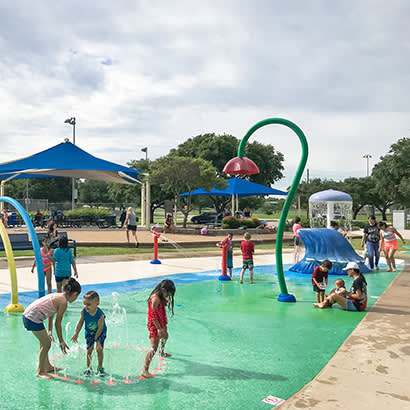
For an enhanced digital experience, read this story in the ezine.
Taking advantage of the Community Development Block Grant Program
The Oklahoma City Parks and Recreation Department began utilizing the Community Development Block Grant (CDBG) Program in the mid-1990s to revitalize under-resourced communities throughout the metro area. As part of the department, Sue Wood supported projects that refurbished old facilities, added onto existing centers, purchased equipment, and ran summer programs, such as the Play in the Park Program. More recently, Wood, now the director of Moore (Oklahoma) Parks and Recreation, has been utilizing the funds to build a new pickleball court next to the agency’s senior center and enhance an income-adjusted neighborhood with two new pavilion parks in Moore. She is now in the process of securing CDBG funds to add to the agency’s family and youth center splash pad.
“The Community Development Block Grant Program is one of the best government grant programs around that helps turn property, facilities and programs in low-income areas into some of the best parks and recreation facilities around,” says Wood.
Created in 1974, the CDBG Program provides annual grants to states, cities and localities on a formula basis. CDBG’s goal is to revitalize neighborhoods, drive economic development, and improve community facilities and services based on three national objectives:
- Principally benefit low- and moderate-income persons
- Aid in the prevention or elimination of slums or blight
- Meet an urgent need by addressing conditions that pose a serious and immediate threat to the health and safety of community members
Many agencies currently using these funds do so as part of the Entitlement Community Program, which receives 70 percent of all CDBG funding. However, funding is available to all communities through the Non-Entitlement Community Program.
Partnerships for Success
In Wood’s experience, buy-in and collaboration with the planning and community development departments have been critical to her department’s success with these funds. Her communities analyzed their five-year and master plans to identify projects eligible under their entitlement CDBG funding.
In Oklahoma City, the parks and recreation department identified an emergency or immediate funding need when its city council requested a summer program in January, leaving the agency little time to prepare. The Oklahoma City Planning Department worked closely with its local U.S. Department of Housing and Urban Development (HUD) official to ensure the funds could be adjusted to provide this program to residents.
Agencies wishing to investigate CDBG funds should begin by reading NRPA’s HUD Community Development Block Grant: Funding for Parks webpage and contacting their local planning departments or HUD field office.
The Impact of CDBG Funds
During the 1990s and early 2000s, Oklahoma City’s city council identified the need to provide parents with free summer programming for their children. At the time, many of the city’s parks did not have the facilities to store equipment or provide staff and kids with a break from the summer heat. With the aid of CDBG funds, the Oklahoma City Park and Recreation Department built storage and programming facilities at eight sites, enabling the Play in the Park Program. At its peak, this program grew to 36 sites and provided safe, well-equipped summer programming for thousands of children. Not only did the community’s children enjoy this program, but also parents experienced some financial relief during a stressful economic time and a sense of peace knowing their children were cared for.
Elyse Gentile is Executive Branch Specialist at NRPA.

